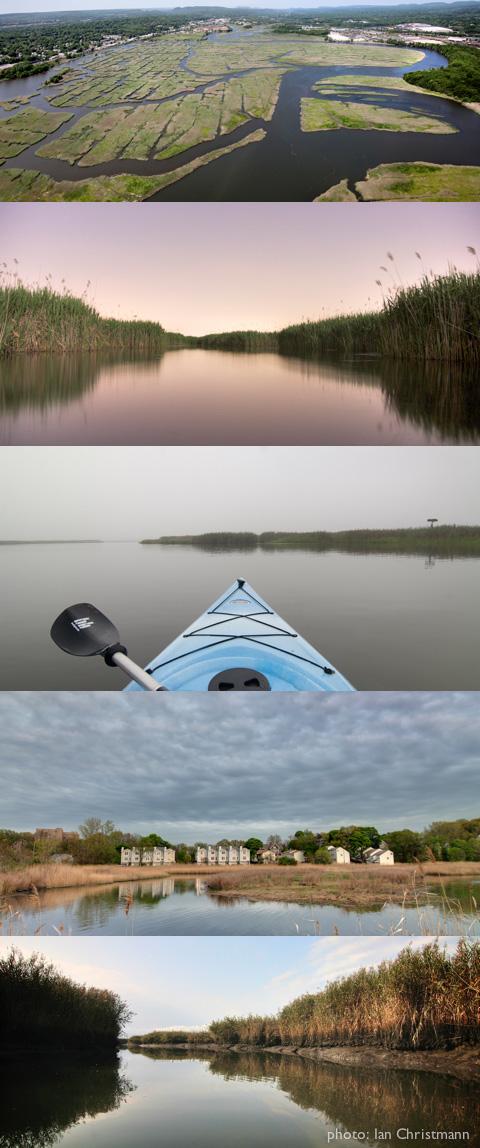Protect the Wetlands

Pollution is an obvious and ongoing problem, but other changes in the Quinnipiac watershed are altering or degrading the ecosystem. Protecting the wetlands and wildlife requires an understanding of the issues and their long-term impacts.
A natural buffer
Native marsh grasses, shrubs, trees, and other plants make up the natural vegetation along the river are critical to the overall health of the watershed. Commercial and residential developments have removed important habitats including inland wetlands, tidal marsh, riparian corridors, and forested areas. The loss of this buffer has many impacts:
- A lack of shade along stream banks causes water temperatures to rise, negatively affecting cold water fish species.
- During the summer months, warm storm water flowing directly into the river harms cold water fish. Eroding river banks deposit sediment that smothers fish eggs and invertebrate larvae.
- Depleted vegetation deprives nutrients to animals and organisms throughout the food chain.
- Invasive (non-native) plant species typically take over areas that have been disturbed, spreading quickly and choking out the native plants that are vital to biodiversity in the ecosystem.
Marsh vegetation
The loss of important plant life degrades habitats and depletes a unique ecology in an urban area. In the Quinnipiac tidal marsh, an approximately 900-acre wildlife management area owned by the state, once-vegetated areas have been replaced by mudflats over the past 40 years. Various causes such as rising sea levels are suspected.
Migrating fish
With numerous dams in the upper portion of the watershed, as well as culverts on smaller streams, fish cannot migrate to the upstream tributaries of the Quinnipiac River watershed.